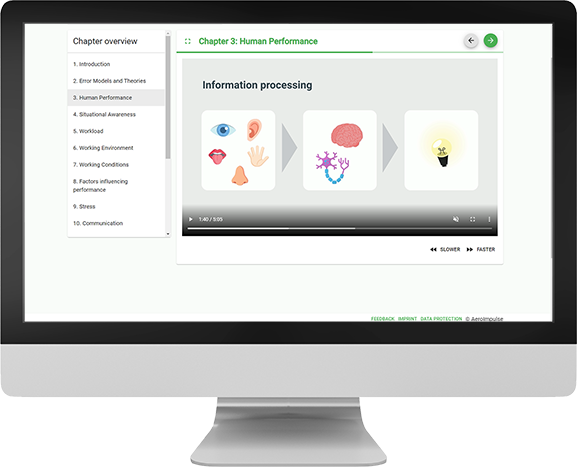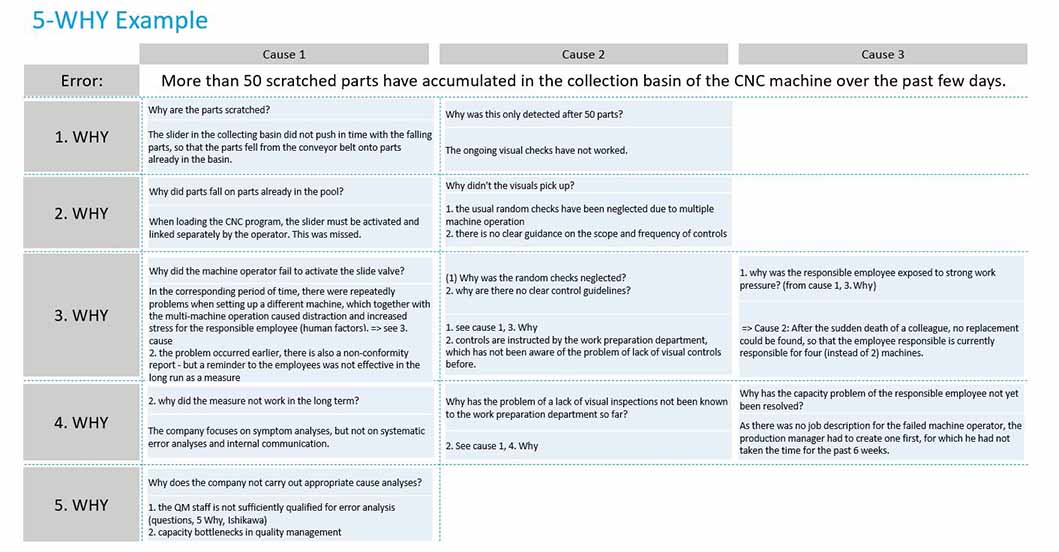Human Factors Accidents in Aviation
Anders sieht es in der Medizin aus. Hier passieren „Bruchlandungen“ zwar viel häufiger. Dennoch wird Prozessschwächen und Behandlungsfehlern intern und medial meist wenig Aufmerksamkeit geschenkt. Sie sind in der Medizin schwerer in der Regel weniger spektakulär – und sie lassen sich leichter identifizieren und ehrlicherweise auch einfacher kaschieren. Teuer sind sie für Patienten und bisweilen auch für Ärzte bzw. Krankenhäuser dennoch.
Ob Medizin oder Luftfahrt, wichtig ist es, dass die Ursachen von Fehlern tiefgreifend untersucht werden. In der Luftfahrt ist dies Standard – und das nicht nur bei schweren Vorkommnissen, sondern auch bei teuren und systematischen oder potenziell systematischen Fehlern.
Diese Seite gibt einen Einblick in die Entstehung einiger schwerer Flugzeugabstürze, bei denen schwerwiegende menschliche Faktoren eine Rolle spielten. Das letzte Beispiel zeigt beispielhaft die typische Untersuchung eines kleineren Fehlers nach der 5-Why Methode in einem kleinen Industriebetrieb bei der Herstellung von Luftfahrzeug-Bauteilen.
Do you know our Human Factors E-Learning yet?

- 3.5 hours (Initial), also modular as Refresher
- video-animated training with final test + certificate
- Available on all devices
Asiana-Airlines-Flight 214 from Seoul to San Francisco (SFO)
The accident occurred because the Boeing B-777 touched down too early and grazed the waterside runway edge. The aircraft was clearly too low and too slow on landing. This was caused by human error on the part of the cockpit crew, with a maintenance-related failure of the instrument landing system (ILS) at SFO Airport contributing to the misconduct.
Although Captain Lee Kang Kuk had a lot of experience with a B-747, it was his first approach to SFO with a B-777. The captain had very little experience on this pattern. He was confronted with the challenge of performing the SFO approach, which was considered demanding, on sight rather than using ILS. Lee told the investigating committee after the accident that he had felt unsure of himself before landing and had expressed this to his training captain during flight preparation. Another pilot Lee had flown with a few days earlier was also critical of his performance.
However, not only the captain is at fault. After all, his B-777 training captain assisted him with the landing. Also the co-pilot was in the cockpit. Both testified that they had assessed the situation as critical shortly before the accident. Yet they did not respond appropriately. In this respect, all three in the cockpit recognized the critical altitude and speed. However, they assumed that the aircraft would regulate this itself via the automatic thrust control. But they did not notice that the system was switched off.
The work enviroment in the cockpit was described by experts as focused but uncommunicative. They should have communicated more during the landing phase and coordinated the approach course with each other as is generally done. This situation was impacted by the fact that the training captain was also working in this capacity for the first time. While he had more experience on the B-777 than the captain, his overall flying experience was less. Therefore, the training captain assumed that his trainee would act correctly at the last moment.
Source: Hinsch, et al. (2016): „Erfolgsfaktoren Effizienz und Sicherheit – Was die Medizin von der Luftfahrt lernen kann“.
More helpful information about Human Factors!
- Human Factors – Understanding and mastering human factors. Learn more!
- Human Factors – Causes of Human Error. Learn more!
Tenerife disaster with 2 jumbo jets
- Las Palmas Airport in Gran Canaria was closed hours earlier as a precaution due to a small bomb explosion. Affected flights were diverted to Tenerife. The airport there was not prepared for the volume of flights and was therefore quickly overcrowded with landed aircraft.
- Shortly before the accident, dense fog rolled in over the airport, which is located in the mountains at an altitude of 650m.
- As the KLM flight rolled into takeoff significantly late due to overcrowding, the crew was pressed for time because they were threatened with duty time overruns. So they ran risk of having to abort the flight with 248 passengers and take it again the next day.
- The KLM jumbo had already been cleared for takeoff, but it was withdrawn by the tower after the Pan Am aircraft radioed that it was still on the runway. However, when the decisive instruction was given, there were overlaps in the radio traffic so that not all the information reached those involved. Clearly audible, however, was the instruction at the end of the radio overlays to the KLM crew, “… stand by for takeoff. I will call you.”
- The KLM captain disregarded this instruction and gave thrust. Even when the flight engineer intervened again during the takeoff procedure and pointed out that the Pan Am aircraft was possibly still on the runway, the captain harshly dismissed these doubts.
A few seconds later, the KLM crew identified the Pan Am jumbo’s position lights in the fog. The desperate attempt to lift the aircraft ended on the upper deck of the Pan Am.
Source: Hinsch, et al. (2016): „Erfolgsfaktoren Effizienz und Sicherheit – Was die Medizin von der Luftfahrt lernen kann“.
Root cause analysis according to 5-Why-Method
You need support with Error Management
We support you in setting up a systematic Error Management!
Get a non-binding offer at info@medicalimpulse.de or
+49 (0)40 5131 5291
